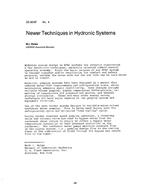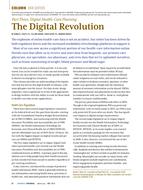Recent studies of air quality in schools have shown that concentrations of a number of indoor pollutants may exceed commonly recognized guidelines or established criteria set for the outdoor environment. The elevated levels of indoor pollutants can be traced not only to significant pollutant sources in schools but also to inadequate supply and control of outdoor ventilation air.
This study examines the use of energy recovery ventilators (ERV) in two schools (located in a Southwestern arid climate) to provide acceptable ventilation to the classrooms and the corresponding effect on indoor air quality (IAQ) contaminant indicators. The effect of cleaning the existing systems under thermal comfort conditions was also examined. IAQ measurements were made in selected classrooms with respect to carbon dioxide, viable and nonviable bioaerosols, volatile organic compounds, and respirable particles. Measurements were taken with and without the use of the ERV in the classrooms and at selected control classrooms and outdoor sites for reference purposes. Pre-ERV results indicated that generally poor ventilation and indoor air conditions existed in the classrooms. Improvements in air quality as a function of ERV use are detailed in this paper for each of the IAQ indicators measured.
Paper from IAQ 1997 — Design, Construction, and Operation of Healthy Buildings: Solutions to Global and Regional Concerns
Citation: IAQ Conference: IAQ 97
Product Details
- Published:
- 1997
- Number of Pages:
- 11
- File Size:
- 1 file , 750 KB
- Product Code(s):
- D-25174


